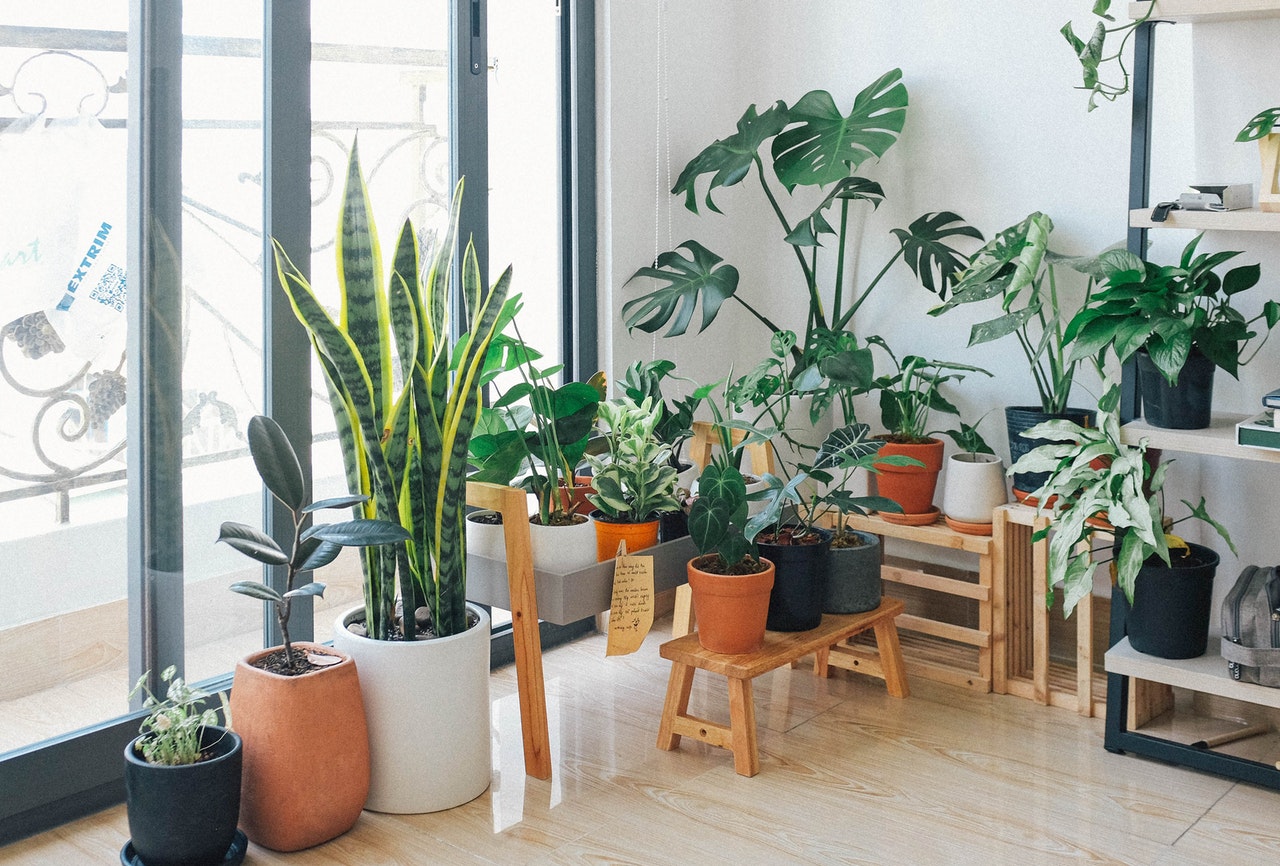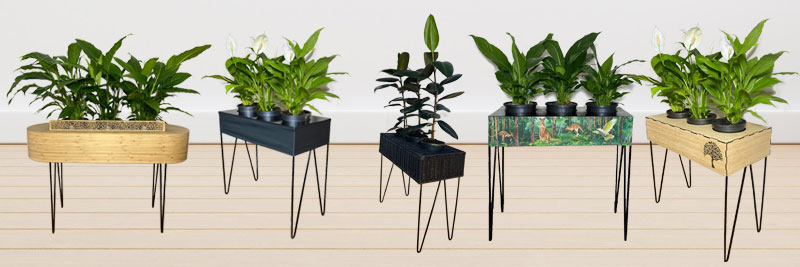Plants need love too!
Plant parents can have varying degrees of commitment and dedication to their plants. Generally we at Fantastic Plants see three levels of love shown to plants.
-
We love our botanic friends and enjoy caring and learning about them to ensure they thrive.
-
We enjoy having plants and acknowledge the benefits they offer.
-
We like the idea of having indoor plants but don’t have a lot of success, in fact many of our plants don’t thrive or die.


When it comes to indoor plant care many plant parents start off with the condition known as FOPDOS – Fear of Plant Demise or Sickness. A hug for an indoor plant comprises:
light, water, location and nutrients
Overcoming FOPDOS may take some practice, false starts and some lessons – Here’s some general tips and wisdom from Captain Fantastic to ensure both plants and parents are happy.
How much light?
 Most popular indoor plants have origins from forests and tropical jungles where light tends to be filtered. The amount of light needed for most of the Fantastic Plants range is medium to bright indirect sunlight. Intensity of light is another factor to be aware of especially in summer when late afternoon west facing windows will receive sunlight that can scorch and harm indoor plants. Exceptions for direct sunlight are succulent plants that thrive on full sun for the whole day. Plants with leaves need about 8 hours of light daily to really thrive.
Most popular indoor plants have origins from forests and tropical jungles where light tends to be filtered. The amount of light needed for most of the Fantastic Plants range is medium to bright indirect sunlight. Intensity of light is another factor to be aware of especially in summer when late afternoon west facing windows will receive sunlight that can scorch and harm indoor plants. Exceptions for direct sunlight are succulent plants that thrive on full sun for the whole day. Plants with leaves need about 8 hours of light daily to really thrive.
The amount of light depends on individual plants so check your plant care tag. When you know how much light your plant will need, you will be able to select the best location for them. Once you have a handle on a plants light needs you’re on your way to being a proud plant parent.
Correct way to water your home and office plants
 Before watering always check to see if your plant needs to be watered. An easy way to find out is by placing your finger in the soil. If the top 20mm of soil is dry you can water the plant. If the soil is moist at the top you don’t need to water the plant yet. Give a generous amount of water that soaks across the entire pot surface then let the plant sit for around 30 minutes to drain properly before placing the pot back into its decorative pot (or onto a saucer). The water needs will vary depending on the plant and season – more in warmer months, less in cooler times.
Before watering always check to see if your plant needs to be watered. An easy way to find out is by placing your finger in the soil. If the top 20mm of soil is dry you can water the plant. If the soil is moist at the top you don’t need to water the plant yet. Give a generous amount of water that soaks across the entire pot surface then let the plant sit for around 30 minutes to drain properly before placing the pot back into its decorative pot (or onto a saucer). The water needs will vary depending on the plant and season – more in warmer months, less in cooler times.
Plant Love tip from Captain Fantastic: Water your plants with water that is room temperature so the plant is not shocked.
Can I water my plant too much?
The answer is yes! Captain Fantastic has a recommendation when it comes to watering your plants: Don’t just water on a schedule – it is important to check your plant to see if it’s ready to be watered.
One of the most common mistakes that can destroy the health of a plant is overwatering. When the roots of a plant have too much water surrounding them they are not able to absorb oxygen.
Avoid topping up and watering your plant often as this can lead to mold problems and root rot. Always make sure that there are drainage holes in your pots to make sure that excess water does not remain in the bottom of the pots and NEVER repot your plant into a decorative pot that does not have drainage holes- you don’t want to drown your plants!
How to select a plant-happy indoor location?
 So, you’re ready for your new plants, but not sure where they will go? Typically, indoor plants that originate from jungles and forests enjoy a shadier location with some humidity while desert plants like warm, dry conditions so knowing which windows receive ideal amounts of warmth and light at different times of the day and year will help determine where your plants will be the happiest. Find out the direction each window faces, for example north facing windows during winter will receive more sunlight than south facing windows. In summer the western facing windows can provide plenty of light but beware of late afternoon direct light which will easily scorch many indoor plants.
So, you’re ready for your new plants, but not sure where they will go? Typically, indoor plants that originate from jungles and forests enjoy a shadier location with some humidity while desert plants like warm, dry conditions so knowing which windows receive ideal amounts of warmth and light at different times of the day and year will help determine where your plants will be the happiest. Find out the direction each window faces, for example north facing windows during winter will receive more sunlight than south facing windows. In summer the western facing windows can provide plenty of light but beware of late afternoon direct light which will easily scorch many indoor plants.
Happy plants need nutrients
 Most initial nutrients that your indoor plants require will come from the potting mix your plant is in, however these nutrients will deplete in just a few months. Macronutrients such as nitrogen, phosphorous and potassium are essential for leaf growth, root growth and overall size of the plant. For optimal health and growth potential either a liquid or slow release fertiliser is recommended from Spring to Summer to top up nutrient levels. Captain Fantastic recommends organic fertilisers to maintain and improve the potting mix structure which also increases its capacity to hold water and nutrients. Warning – Follow instructions on fertilizers carefully. Over use of fertilizers can kill a plant or scorch its leaves.
Most initial nutrients that your indoor plants require will come from the potting mix your plant is in, however these nutrients will deplete in just a few months. Macronutrients such as nitrogen, phosphorous and potassium are essential for leaf growth, root growth and overall size of the plant. For optimal health and growth potential either a liquid or slow release fertiliser is recommended from Spring to Summer to top up nutrient levels. Captain Fantastic recommends organic fertilisers to maintain and improve the potting mix structure which also increases its capacity to hold water and nutrients. Warning – Follow instructions on fertilizers carefully. Over use of fertilizers can kill a plant or scorch its leaves.
Here are a few more helpful tips for happy plants…
Mimicking a plants tropical environment
Many indoor plants come from tropical climates and they are used to higher levels of humidity than in most indoor environments. Not to worry, there are some simple ways to increase the humidity level in your indoor environment to keep your tropical plants healthy and happy. To imitate a humid environment, you can mist these plants (ask Captain Fantastic for a mist spray bottle) every few days in addition to their regular watering. You can also group your plants together to create a microclimate and as the plants transpire they will create a humid environment. Placing a saucer containing pebbles and water under the plants outer pot will also help to improve humidity.
Also, check your plant’s leaves and give them a wipe from time to time to remove any dust so that the light reaches them and so the pores of the plant remain clear- we don’t want the plants to feel suffocated. This also give you a chance to see how your plants are doing. You can remove any unhealthy leaves and make sure your plant looks happy.
Going on holidays? — How to avoid FOPDOS
Luckily cacti and succulents can go for months without water so they won’t be a problem. You can do a few things to help your plants while you are away. Remove buds and flowers and trim some of the foliage off mature plants so the plant will require less water while you are away. For large plants, once you have watered the plant, you can place damp newspaper on the soil to keep the moisture in and the plant hydrated. You can move sun loving plants out of brightly lit locations into less bright spots so they don’t dry out as quickly. There are DIY solutions like water bulbs or a drip irrigation kit to drip feed your plants while you’re away. Here is a Melbourne supplier of a simple self watering device that can supply water for approximately 7 days.
http://www.moisturematic.com.au/how-it-works/
Captain Fantastic also recommends the “ask a neighbor” method for maintaining plant water needs while on holidays. Feel free to contact us for any tips or plant care questions here
Plant Safety – children and pets
Most people know that it’s best not to munch on your indoor plants but our children and furry friends may not. Warning: some plants are very toxic. Don’t despair, we do offer common indoor plants that are non-toxic. Fantastic Plants range of non toxic plants include: Parry Parlor Palm, Green Prayer Plant, Rattlesnake plant, and Pin Stripe Calathea. Captain Fantastic advises before bringing any new indoor plant into your home to check first on suitability. Simple ask us for our current range of non-toxic plants.

PLANTER BOXES
Rent stunning planter boxes at work
PLANTERS
Rent custom designed planters

